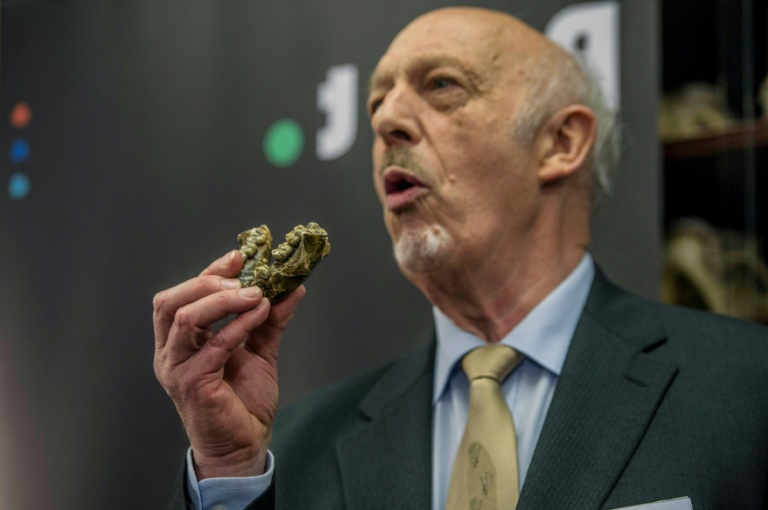The most complete skeleton ever found of an australopithecus, a forerunner to modern man, went on display for the first time in Johannesburg on Wednesday following a 20-year process to excavate and assemble the 3.67 million-year-old remains.
Known as “Little Foot” because four small foot bones were the first to be discovered, the skeleton is the most complete example of a human ancestor older than 1.5 million years yet discovered. It will now be available for public viewing at Wits University in Johannesburg.
“This is one of the most remarkable fossil discoveries made in the history of human origins research and it is a privilege to unveil a finding of this importance today,” said Ron Clarke, the Wits University academic who discovered Little Foot.
Australopithecus — Latin for “southern ape” — are considered to be either closely related to, or the ancestors of, modern man, with a mixture of ape-like and human characteristics.
The reconstruction process revealed that the australopithecus had a skeleton far closer to that of humans than previously thought and actually walked upright instead of on its hands and knees.
“What Little Foot shows is that the pictures you see in books of our ancestors coming up and walking on all-fours, gradually getting more and more upright is all nonsense,” Clarke told AFP.
Clarke made the discovery from among fossils that had been taken from the Sterkfontein caves, 50 kilometres (30 miles) northwest of Johannesburg, in 1994 and 1997.

Palaeoanthropologist Professor Ron Clarke says “Little Foot” is one of the most remarkable fossil discoveries in the history of human origins research
He then dispatched a team to probe the cave complex to search for the rest of the skeleton.
The complex is housed within the Cradle of Humankind World Heritage Site which has been an incredibly rich source of artefacts for palaeontologists since it was first discovered.
“The process required extremely careful excavation in the dark environment of the cave,” said Clarke.
Some 25 academic articles will be written in the coming years on the basis of the now concluded reconstruction process, Clarke added.
Experts believe that the skeleton belonged to a young girl who fell 20 metres to her death in the cave.






